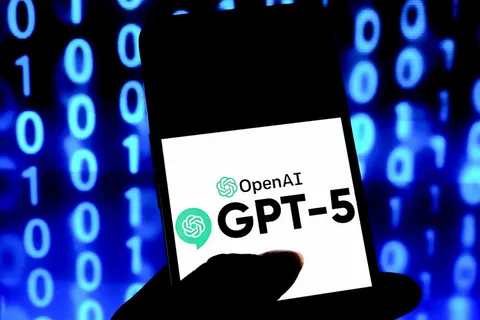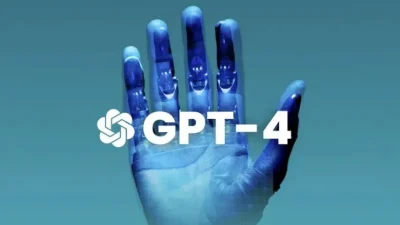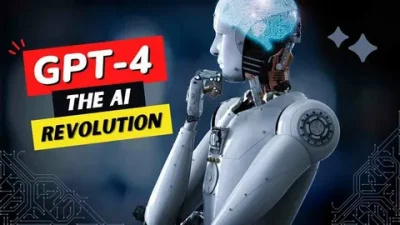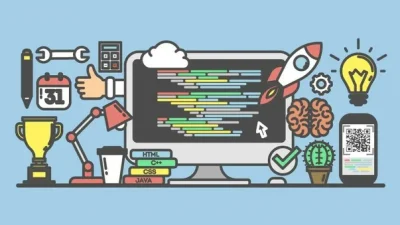Artificial intelligence continues to evolve at an unprecedented pace, and with each iteration of generative AI models like GPT, we witness groundbreaking advancements that redefine what AI can achieve. OpenAI’s GPT-4 set a high standard for natural language processing, showcasing exceptional abilities in generating human-like text, understanding complex instructions, and even excelling in specialized tasks. However, the anticipation surrounding GPT-5 is even greater. What can we expect from the next generation of OpenAI’s flagship model?
This article explores the potential improvements, features, and applications of GPT-5, offering insights into how it could reshape AI-driven technologies and enhance user experiences across various domains.
Enhanced Language Understanding and Generation
One of the core functions of GPT models is language understanding and generation. GPT-5 is likely to build upon the foundations of its predecessors, offering improved contextual awareness and linguistic capabilities. While GPT-4 demonstrated significant advances in comprehending nuanced prompts and generating detailed responses, GPT-5 could push these boundaries further.
Key Improvements in Language Processing:
- Deeper Contextual Understanding. GPT-5 may excel at maintaining coherence over long conversations, interpreting intricate queries, and understanding complex texts.
- Enhanced Multilingual Support. While GPT-4 supports multiple languages, GPT-5 might achieve near-native fluency across even more languages, including low-resource ones.
- Reduced Bias and Errors. OpenAI has been actively working to minimize biases and improve the factual accuracy of its models. GPT-5 could feature advanced mechanisms to detect and mitigate biases, ensuring more reliable outputs.
Language Processing Improvements in GPT Models
| Feature | GPT-4 | Predicted for GPT-5 |
|---|---|---|
| Contextual Coherence | High | Exceptional |
| Multilingual Capabilities | Broad | Near-native across most languages |
| Bias Mitigation | Moderate Improvements | Advanced, minimal residual bias |
Integration of Multimodal Capabilities
GPT-4 introduced limited multimodal capabilities, allowing it to interpret text and images. GPT-5 is expected to expand this functionality significantly. Imagine an AI that not only understands and generates text but can also process audio, video, and potentially other data types.
Potential Multimodal Features:
- Text-to-Image and Image-to-Text Conversion. GPT-5 could seamlessly analyze visual data, generate detailed descriptions, and create visual outputs based on textual prompts.
- Speech Recognition and Synthesis. Incorporating advanced speech-to-text and text-to-speech capabilities could enable natural voice interactions with GPT-5.
- Video Processing. The ability to analyze, summarize, and even generate video content might become a reality, expanding applications in entertainment, education, and more.
These advancements could make GPT-5 an invaluable tool for content creators, educators, and industries reliant on data integration.
Better Personalization
Personalization is becoming a cornerstone of user experience in AI technologies. While GPT-4 offers limited customization options, GPT-5 could bring forth more sophisticated tools to tailor interactions based on user preferences and needs.
Possible Personalization Enhancements:
- Dynamic Learning. GPT-5 might adapt to individual users over time, learning their preferences, style, and requirements.
- Contextual Memory. Enhanced memory capabilities could allow GPT-5 to retain information across sessions, making interactions more fluid and intuitive.
- Customizable Personas. Users could define specific personas for GPT-5, optimizing its tone, approach, and knowledge depth for different tasks.
These features would enable businesses and individuals to leverage AI more effectively, ensuring outputs that align closely with their unique contexts.
Personalization Features of GPT Models
| Feature | GPT-4 | Predicted for GPT-5 |
| Dynamic Learning | Limited | Advanced |
| Contextual Memory | Short-term | Long-term across sessions |
| Customizable Personas | Basic | Comprehensive |
Advances in Reasoning and Decision-Making
Reasoning capabilities are central to the utility of generative AI models. GPT-4 showed promise in handling logical tasks, solving puzzles, and offering reasoned arguments. GPT-5 is expected to refine these abilities, providing even more robust problem-solving skills.
Predicted Improvements in Reasoning:
- Logical Consistency. Enhanced algorithms could enable GPT-5 to construct well-formed arguments and avoid contradictory statements.
- Complex Problem Solving. GPT-5 might tackle highly specialized problems across disciplines, from mathematics to philosophy.
- Collaborative Reasoning. The model could support real-time brainstorming, offering suggestions and refining ideas collaboratively.
These advancements could revolutionize industries such as research, education, and strategic planning, where logical analysis is paramount.
Ethical AI and Responsible Usage
As AI systems become more powerful, ethical considerations take center stage. OpenAI has prioritized safety and transparency, and GPT-5 is likely to embody these values.
Ethical Goals for GPT-5:
- Improved Fact-Checking: GPT-5 could integrate real-time access to verified databases, enhancing its ability to provide accurate information.
- User Accountability Tools: Mechanisms to track and audit AI-generated outputs could promote responsible usage.
- Stronger Safeguards: By incorporating advanced filters, GPT-5 could prevent misuse, including generating harmful or misleading content.
These measures would help establish GPT-5 as a trustworthy and responsible AI tool, fostering confidence among users.
Applications Across Industries
The potential applications of GPT-5 are vast, spanning multiple sectors. Below are some key areas where GPT-5 could make a significant impact:
Education
- Creating personalized learning plans for students.
- Assisting with complex academic research and analysis.
- Automating grading and feedback systems.
Healthcare
- Analyzing medical records and offering diagnostic suggestions.
- Streamlining patient communication through virtual assistants.
- Assisting researchers in developing treatments.
Business and Marketing
- Automating content creation, from blogs to advertisements.
- Analyzing market trends and generating actionable insights.
- Enhancing customer support through more intuitive chatbots.
Creative Industries
- Assisting in writing, music composition, and graphic design.
- Generating scripts, storyboards, or prototypes for creative projects.
- Collaborating with artists to refine concepts and ideas.
Table 3: Key Applications of GPT-5 by Industry
| Industry | Application Examples |
| Education | Personalized learning, research aid |
| Healthcare | Virtual assistants, diagnostics |
| Business & Marketing | Content automation, market analysis |
| Creative Industries | Writing, music, design support |
Conclusion
GPT-5 represents a new frontier in AI technology, promising unprecedented advancements in language processing, multimodal integration, personalization, and reasoning. With its potential to address complex problems, streamline workflows, and transform industries, GPT-5 could redefine our interactions with AI. OpenAI’s commitment to safety and ethics ensures that this progress will be balanced with responsibility, paving the way for a future where AI enhances human capabilities without compromising trust or security.
As we await its release, one thing is certain: GPT-5 will set a new benchmark for what generative AI can achieve.






